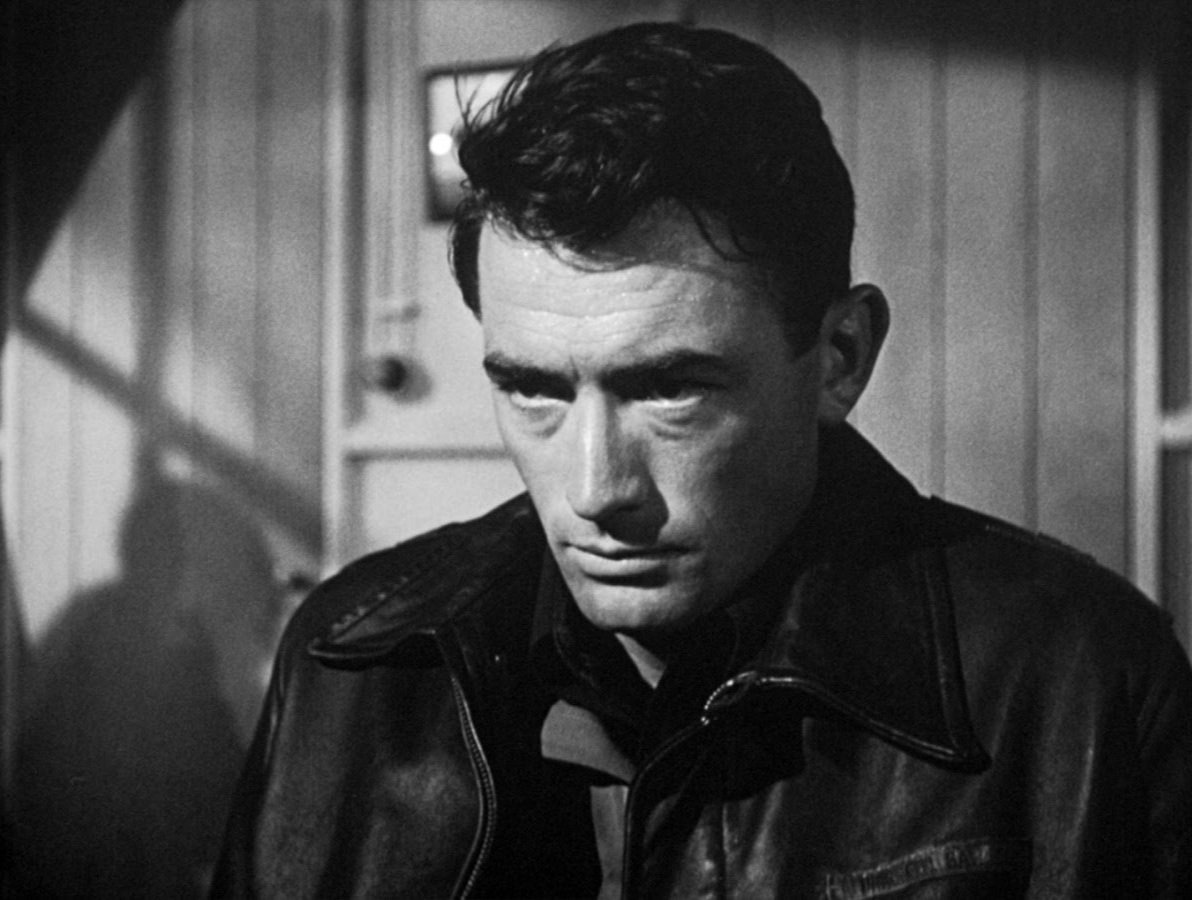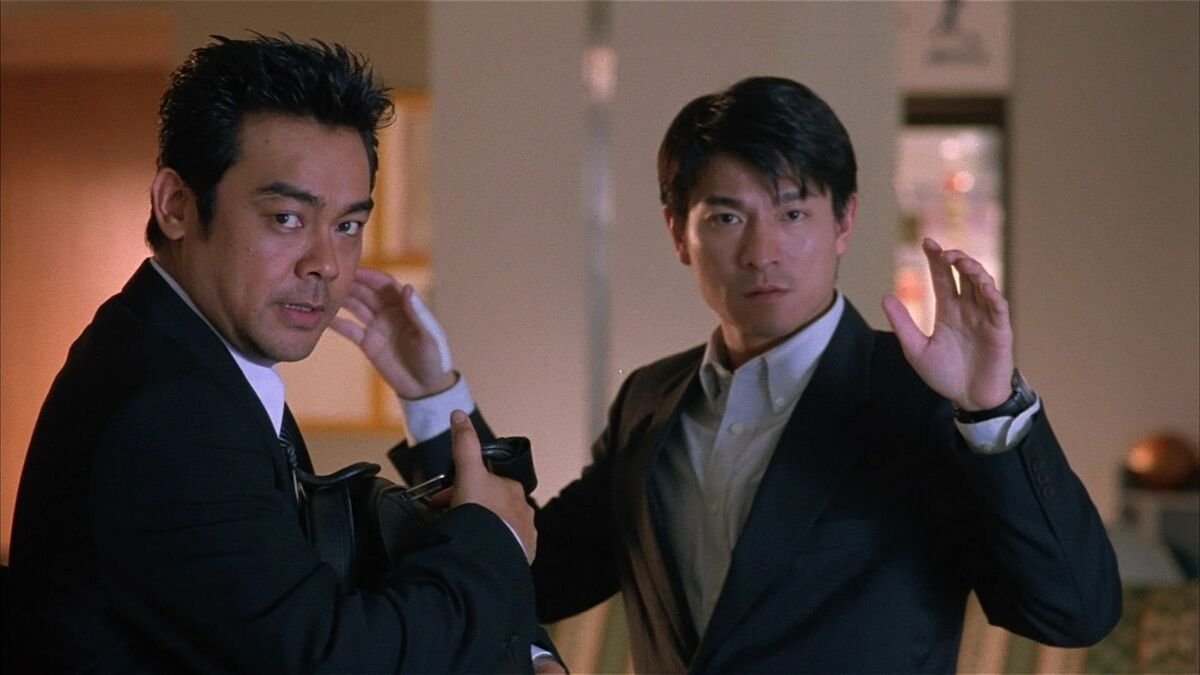Review: Twelve O'Clock High (1949)
Twelve O’Clock High, starring Gregory Peck as Brigadier General Frank Savage, is a work of sober yet staggering dramatic power. It is one of the best accounts of the physical and mental toll on active servicemen I have ever seen, as well as a gripping portrayal of the nuts and bolts of the Allied daytime precision bombing of Germany during World War II. It is justifiably a war movie classic.
A postwar sequence frames the main narrative of Twelve O’Clock High. In 1949, an American in London, Harvey Stovall (Dean Jagger), recognizes in an antique shop a “Toby Jug,” or clay jug in the form of a masked man’s head, which he believes he’s seen before. Deeply moved, Stovall purchases the jug and travels into the countryside, to Archbury, where we discover the remains of an airfield. In a wonderful transition, Stovall stands on the old, grass-covered runway and stares back into his memory. As the wind picks up a sound bridge swells: we hear the roaring of airplane engines, the wind becoming the gusts from the propellers, and we go back in time to the events of the Second World War. It’s a beautiful scene that aches with the memory of wounds that have not, or cannot, heal.
It is 1942, and the Toby Jug stands on the mantle of the airfield’s officer’s club at Archbury. When the face of the jug is turned out to the room it signals there is a mission to fly. However, a run of bad luck plagues the 918th Bomb Group of the US Airforce. Savage’s friend, Group Commander Colonel Davenport (Gary Merrill) is exhausted, and Major General Pritchard (Millard Mitchell) believes that Davenport is identifying too closely with the men under his command. Pritchard orders Savage to assume command of the 918th, in order to whip them into shape. The Air Force needs the 918th to hold the line and keep pounding the Germans until the thousands of new aircraft American industry is building can be brought into action. The European war can be turned in the Allies’ favour so long as the bomber groups can keep up the pressure. Twelve O’Clock High assumes the form of countless war, or sports, movies, with a new commander or coach brought in to turn things around.
Hard as nails. Tough as boot leather. Take any military cliché for grit, and you could describe Savage, who is a fictional character, but one based on several real group commanders. Peck, with his gravelly voice of authority and his demeanor that conveys strength as well as decency, is perfect for the role. Savage has to be hard to get the job done, and the film takes time to show Savage making different power plays and interpersonal maneuvers, in order to not only assume genuine command and leadership of the group, but also to earn their trust and loyalty.
Savage’s big speech to the group is the epitome of hard-edged motivation:
You've been looking at a lot of air lately, and you think you ought to have a rest. In short, you're sorry for yourselves. I don't have a lot of patience with this, "What are we fighting for?" stuff. We're in a war, a shooting war. We've got to fight. And some of us have got to die. I'm not trying to tell you not to be afraid. Fear is normal. But stop worrying about it and about yourselves. Stop making plans. Forget about going home. Consider yourselves already dead. Once you accept that idea, it won't be so tough.
The speech and other motivational sequences are fascinating for their portrayal of leadership and team-building, and for the spoken and unspoken dynamics of hierarchical military and men-only settings. A movie like this shouldn’t be shunned today for its all-male cast; rather, this is a window onto how such an environment operates.
Twelve O’Clock High also defies the pro-war/anti-war binary we often try to impose on war movies. Twelve O’Clock High balances an obsession with completing the mission alongside a measured, and unflinching, assessment of what this costs in terms of human lives, as a matter of both quantity and quality. The film is also obsessed with competency, with the ability to figure out how to do the mission well, and as I said above, it basically follows the underdog team narrative common to many war and sports movies. Savage has to whip the squadron into shape, and the whipping is, yes, painful and harmful. To do this, Savage has to distance himself from caring for his men as his “boys,” knowing that many will have to die to complete their bombing runs.
But here’s the thing. While Savage can complete the mission and make the 918th a lethal bombing force, one of the costs is that he, ultimately, cannot handle it. The pressure breaks him, like Davenport before him. Being a leader requires his distance and hardness but also his engagement and connection to his men, and the tension that generates cannot be maintained forever. Savage’s emotional breakdown parallels the emotional response the film works to elicit in the viewer; it’s a film of deep feeling but not sentiment. It slowly builds and swells until the tension breaks. We feel Savage not being able to take it.
Twelve O’Clock High is a film that wants to unflinchingly measure what it takes to produce men who can bomb the hell out of the enemy while also recognizing that this process exhausts the men, and even destroys some of them. This is not Stanley Kubrick’s Full Metal Jacket (1987), but it is probing. Of course, made only four years after the war against Nazi Germany, Twelve O’Clock High does not assert that the cost was not worth it to win that war, which is why this is not strictly an anti-war movie. But the cost, the human toll, on each airman, is never skirted. The movie doesn’t shy away from the inhumanity military operations can breed.
These bombers, after all, are flying to drop bombs on the enemy, at first on German factories and industry but eventually on German cities and civilians. The film doesn’t depict the latter years of the war and doesn’t directly address this ethical dilemma, that is to say, the cost on the enemy side, which is also made up of human beings. Twelve O’Clock High is a war movie where we never see the enemy’s face, and so while it avoids humanizing the enemy, there is also little hate for them. The enemy is more of an abstract, which later war movies such as Christopher Nolan’s Dunkirk (2017) have picked up on, although, unlike Dunkirk, Twelve O’Clock High is not focused on survival. Rather, it’s about the mission in which many will not survive. What does it take to perform the mission and win? What is the “maximum effort” (to repeat the film’s key phrase) a man can give?
As far as war movie combat goes, Twelve O’Clock High does a great job at capturing the scale and depth of aerial combat, relying largely on real war footage shot by the US Air Force and the German Luftwaffe. Made only four years after the end of the war, there’s an authenticity and raw believableness to the portrayal of air combat and its mechanical and human requirements that so many movies removed by decades lack.
In my experience, classical Hollywood’s engagement with WWII often has a distorted reputation among film buffs. War movies from the classical period are often considered, as a whole, simplistic, jingoistic, and decidedly pro-war, set up as a sort of contrast against post-Vietnam American war movies. But the actual film history seems more complex (even as I admit I am not an expert in the genre). It’s true that many thrillers (and not necessarily combat movies) made during the war years are suffused with fear of German spies, saboteurs, and military might, and they often end with a propagandistic note asserting “We shall prevail.” Fair enough, given the time. I also think a lot of people assume that 1950s John Wayne war movies about fighting the Japanese characterize all early WWII movies. But many movies, such as, most famously, William Wyler’s The Best Years of Our Lives from 1946, are deeply engaged in the psychological, and other, impacts of the war. Other films hint at the trauma of the war on men. Twelve O’Clock High stands in this tradition.
At its end, Twelve O’Clock High returns to the frame narrative, giving us the full circle of so many classical Hollywood dramas. The return to the airfield in the present also underscores the extra dimension that makes this especially appropriate viewing for Remembrance Day (or Veterans Day). The film is explicitly framed by the serviceman’s memory of, even nostalgia for, the war—both his fondness for the bonds with other men forged, and for the haunting cost of war. The wound that never heals.
9 out of 10
Twelve O’Clock High (1949, USA)
Directed by Henry King; screenplay by Sy Bartlett and Beirne Lay Jr.; starring Gregory Peck, Dean Jagger, Gary Merrill, and Millard Mitchell.



George More O’Farrell’s The Holly and the Ivy is a perceptive Christmas drama that deserves a place in the Christmas rotation.